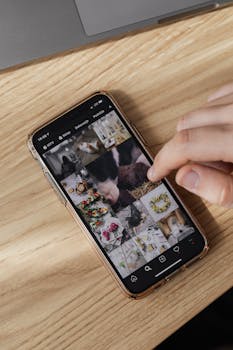Introduction to Zettelkasten Notes
A tsunami of information can often flood our daily lives, making it challenging to sift through, process, and retain. But what if there was a method to transform this chaos into a well-structured, interconnected web of knowledge? Welcome to the world of Zettelkasten notes, a smart note-taking method that has revolutionized personal knowledge management.
Zettelkasten, a German term meaning "slip box", is a method popularized by the German sociologist Niklas Luhmann. Its effectiveness lies in its ability to not just store, but also connect information in a way that mimics the natural workings of the human brain.
This method involves breaking down information into discrete notes, each capturing a single idea, and then linking these notes to form an interconnected network of ideas. Zettelkasten notes elevate the concept of note-taking to a dynamic process, enhancing learning, critical thinking, and knowledge retention.
Whether you are learning Mandarin, studying cognitive science, or just navigating your way through a plethora of information, the Zettelkasten method can be a powerful tool in your lifelong learning journey. So, let's delve deeper into understanding and unlocking the power of Zettelkasten notes.
The Origin and History of Zettelkasten Notes
The Zettelkasten method has its roots firmly planted in the 1950s, a time when digital devices were a distant dream and organizing thoughts depended heavily on tangible tools. Imagine a world before hyperlinks and cloud storage. In this world, a German sociologist, Niklas Luhmann, devised a unique system to manage his knowledge and ideas.
The Role of Niklas Luhmann in the Development of Zettelkasten
Niklas Luhmann, the mastermind behind the Zettelkasten method, was a prolific writer with over 50 books and hundreds of academic articles to his name. His productivity was not a result of superhuman intelligence, but a testament to his unique note-taking system: the Zettelkasten method.
The term 'Zettelkasten' is German for 'note box' or 'slip box', a fitting moniker for Luhmann's method. He used a physical box (a kasten) to house an ever-expanding collection of index cards (zettels), each card bearing a single nugget of information or an idea. Luhmann's adherence to a few key rules while jotting down his notes was crucial in the success of his method. He always wrote notes in his own words, provided enough context for future reference, and made sure to include the source of the information.
The Evolution of Zettelkasten from Paper to Digital
As we transitioned into the digital age, the principles of the Zettelkasten method proved timeless and adaptable. The essence of the Zettelkasten method, turning fleeting ideas and literature notes into permanent notes, thrives even in the digital landscape.
Today, physical index cards and boxes have been replaced by digital tools and platforms. Whether it's a comprehensive spreadsheet, a Trello board, or a dedicated Zettelkasten app, the digital age has provided numerous means to implement the Zettelkasten method. However, the primary goal remains the same: to form connections between seemingly unrelated pieces of information and create a knowledge network that mirrors our natural thinking process.
From paper slips in a wooden box to bytes of data in the cloud, the Zettelkasten method has evolved but the core principles remain. As we continue to accumulate information at an unprecedented pace, this time-tested method of knowledge organization proves to be a powerful tool in our quest for lifelong learning.

Understanding the Zettelkasten Method
As we delve deeper into the world of Zettelkasten notes, let's take a moment to comprehend the three core principles of this powerful knowledge organization method: Atomicity, Connectivity, and the Types of Notes.
The Principle of Atomicity in Zettelkasten
Atomicity, or the principle of keeping things simple, is the bedrock of the Zettelkasten method. Each note in a Zettelkasten system represents a single idea or piece of knowledge. Just like an atom is the smallest unit of a chemical element, a note in Zettelkasten should be the smallest unit of a topic or idea. You give your note an ID and limit its content to that single topic. This way, each note remains compact and focused, allowing you to explore and expand upon that idea in depth.
The Principle of Connectivity in Zettelkasten
While atomicity ensures simplicity, the principle of connectivity brings dynamism to your Zettelkasten. Instead of merely storing isolated pieces of information, the Zettelkasten method encourages you to link your notes, forming a web of interconnected ideas. The magic of Zettelkasten comes from these connections, allowing you to see patterns and relationships between different pieces of knowledge. Remember, full-text search alone is not enough. Setting links between notes enriches your knowledge web, especially in the long run.
The Types of Notes in Zettelkasten: Fleeting, Literature, and Permanent Notes
Equally as crucial in the Zettelkasten method are the types of notes: fleeting notes, literature notes, and permanent notes. Fleeting notes are quick scribbles that you capture throughout the day. They are ephemeral, transient, and often discarded or archived after being processed.
Literature notes, on the other hand, are made while you're delving deep into a specific resource, like a book or article. They are typically filed separately from your permanent notes and play a critical role in your referencing system.
The real heroes of the Zettelkasten system, however, are the permanent notes. These are the refined, polished ideas that you've decided to add to your Zettelkasten for long-term reference. They are the result of thoughtful processing and reflect the ideas you wish to explore further.
Understanding and implementing these principles and types of notes are fundamental steps in harnessing the power of the Zettelkasten method. In the next section, we will explore in detail how to effectively implement these principles in your learning journey.

Implementing the Zettelkasten Method
Embarking on your Zettelkasten journey can feel like venturing into uncharted territory. Fear not, fellow explorer, for we are here to guide you through this land of knowledge organization. From writing notes in your own words to creating an identification system, let's delve into the practicalities of implementing the Zettelkasten method.
Writing Notes in Your Own Words
Let's start with the very first step: note-taking. Zettelkasten emphasizes the importance of crafting notes in your own words. This is not merely about avoiding plagiarism, it triggers a deeper level of understanding and engagement with the information. As you paraphrase, you're forced to digest and internalize the concept before regurgitating it in your own linguistic style. This enhances comprehension and helps you embody the information, making it easier to recall later.
A tool like Hypothes.is, funded by Atlassian Ventures, could be your best friend here. It allows you to annotate information directly on a website, fostering active reading and immediate note-taking. Whether you're deciphering complex Chinese characters or delving into cognitive science theories, writing notes in your own words will make the knowledge stick.
Creating an Identification System to Connect Related Ideas
Remember Niklas Luhmann's super analog numbering system? Well, you may not need to replicate it exactly, but creating an identification system to connect related ideas is a crucial part of the Zettelkasten method. This system allows you to see the big picture and easily navigate your knowledge repository.
When creating your identification system, consider using a digital tool that can facilitate linking. This could be as simple as a spreadsheet or as complex as a dedicated note-taking app. Whichever tool you choose, the key is to create a system that allows you to easily link ideas, fostering an interconnected network of knowledge.
Transferring Fleeting and Literature Notes to Permanent Notes
Finally, after you've taken your notes and created your identification system, it's time to transfer your fleeting and literature notes into permanent notes. This process involves deciding which tidbits of information are essential and translating them into your system for long-term storage.
This step is where the real magic happens. As you review your notes, you’ll be able to form connections between seemingly unrelated pieces of information. Transferring notes to your Zettelkasten is not just about storing information, it's about sparking connections between ideas.
In conclusion, implementing the Zettelkasten method may seem daunting at first, but with a little practice, it can become a simple and efficient part of your learning routine. Whether you're mastering Mandarin or exploring cognitive science, the Zettelkasten method can revolutionize the way you organize and recall information.
The Benefits of Using Zettelkasten Notes
To navigate the labyrinth of knowledge successfully, it's essential to have a reliable compass. The Zettelkasten method, with its unique approach to note-taking, serves as that compass, guiding you through the maze of information and ensuring you internalize and connect knowledge effectively.
Forming Strong Connections Between Different Pieces of Information
In the vibrant tapestry of knowledge, each thread of information is interconnected, forming a network of ideas. The Zettelkasten method thrives on this interdisciplinary approach, promoting freeform notes over rigid categorizations. This allows you to connect dots between seemingly unrelated fields, sparking lightbulb moments that could transform your understanding and application of information. For example, a psychological concept could influence your marketing strategy, a connection you may have missed with a more structured note-taking system.
Improving Retention and Recall
One of the key rules of the Zettelkasten method is to write in your own words, a rule that serves a twofold purpose. Firstly, it promotes a better understanding of the subject matter as you need to process information thoroughly to express it in your own terms. Secondly, research supports that the act of writing boosts retention, aiding memory recall. And in case your memory fails, the Zettelkasten's unique identification system can help you locate the information you need.
Boosting Efficiency and Combating Information Overload
In the digital age, we are bombarded with an overwhelming amount of information. The Zettelkasten method helps combat this information overload by mimicking the way our brains work. Rather than categorizing and storing information in rigid blocks, our brains run a continuous log of interconnected information, which is exactly how this method of note-taking works. Moreover, once you've built out your Zettelkasten, you'll have a personalized database of information at your fingertips, saving you precious time from rummaging through random documents and files.
Supporting Knowledge Sharing and Enhancing Creativity
Knowledge is power, but shared knowledge is empowering. A well-structured Zettelkasten can function as a centralized database, making important information accessible to everyone on your team. This encourages collaborative learning and can foster a culture of innovation and creativity. Furthermore, Zettelkasten's emphasis on connecting ideas can also stimulate creative thinking, helping you to see patterns, form new connections, and develop unique perspectives.
In summary, adopting the Zettelkasten method can enhance your learning journey by fostering strong connections between information, improving memory retention, boosting efficiency, and promoting collaborative learning and creativity. Whether you're learning Mandarin or exploring a new field of study, the Zettelkasten method can be your trusted sidekick, streamlining your learning process and maximizing your productivity.
Using Traverse App for Zettelkasten Notes
The world of productivity apps is vast, but when it comes to implementing the Zettelkasten method, not all apps are created equal. Enter the Traverse app, a powerful tool designed to supercharge your learning and take your note-taking to the next level.
The Features of Traverse App that Support Zettelkasten Method
Traverse has been designed with the principles of the Zettelkasten method in mind, providing a seamless way to create, organize, and connect your notes. It offers quick linking to other notes, backlinks at a glance, and visual organization of notes, all of which are crucial to creating a robust web of interconnected knowledge.
With Traverse, you can create sketches in your notes to add a visual dimension to your learning, embed videos, audio, images, and attach study resources like PDFs and other documents. You can also use multi-color highlighting to categorize and prioritize your notes, and there are code blocks and inline code for those learning how to program.
But the capabilities of Traverse aren't just limited to note-taking. It incorporates the concept of spaced repetition, a proven retrieval practice essential to any effective study process. You can create cloze deletions (fill-in-the-blank) flashcards directly from your notes, and the app's spaced repetition schedule is optimized by default but fully customizable to fit your learning curve.
Importing Anki Decks for Continued Learning with Traverse
One of the standout features of Traverse is its ability to import Anki decks. Anki is a popular flashcard app that uses spaced repetition to help users memorize new information. By importing your Anki decks into Traverse, you can continue your flashcard study while benefiting from the additional features of Traverse. This integrated approach to learning combines the best of both worlds, making your study process more efficient and effective.
Learning Mandarin Chinese with Traverse and Mandarin Blueprint
For those on a journey to master Mandarin Chinese, Traverse, coupled with the Zettelkasten method and Mandarin Blueprint, can be a game-changer. Mandarin Blueprint offers a structured and systematic way to learn Mandarin, and by organizing your Mandarin learning materials in Traverse using the Zettelkasten method, you can actively engage with the content, form connections between different pieces of information, and review your notes using spaced repetition.
This approach allows you to digest complex information, connect ideas in new and fascinating ways, and create a personalized web of knowledge that's easy to navigate and retrieve information from. It's like having a personal knowledge base that grows with you as you continue your lifelong learning journey.
In conclusion, by leveraging the power of Traverse and the Zettelkasten method, you're not just taking notes - you're building a knowledge network that can elevate your learning and productivity to new heights.

The Best Note Apps for Zettelkasten
Now that we've seen how the Zettelkasten method can revolutionize your note-taking and learning processes, let's delve into the best note apps that support this method. Each of these apps has unique features that make them suitable for implementing the Zettelkasten system.
Amplenote
One of the leading apps for Zettelkasten note-taking is Amplenote. Amplenote offers robust functionality for note-taking, task management, and planning. Its rich text features, including text highlights, font style changes, and latex markups, make it a visually appealing choice. Amplenote's key strength lies in its backlinking capabilities that support the principle of connectivity in Zettelkasten, allowing you to create a network of interlinked notes.
Obsidian
Obsidian is a knowledge base that works on local Markdown files. It stands out for its focus on building a 'second brain' and its capacity for encoding knowledge, particularly with its mind mapping canvas. Although Obsidian lacks built-in features for retrieval practice, such as flashcards, its capabilities for encoding knowledge are robust, making it a fantastic tool for Zettelkasten note-taking.
Notion
Notion is not just a note-taking app; it's an all-in-one workspace for your notes, tasks, wikis, and databases. It's popular for its advanced note-taking features and its flexibility. However, it's important to note that Notion doesn't inherently support the Zettelkasten method's principles. To use Notion for Zettelkasten, you'll need to create a customized system within the app.
RemNote
Lastly, RemNote is a note-taking app that combines flashcards within notes. It's designed to make learning easier with its built-in spaced repetition system. RemNote's ability to interlink notes and organize them into 'rems' makes it a robust tool for implementing the Zettelkasten method.
Remember, the right app for you will depend on your personal preferences and learning style. Whether you're taking notes for a lecture, planning a project, or learning Mandarin Chinese, these apps offer powerful tools to make the most of the Zettelkasten method. So, take your time to explore each one and find the one that suits you best.
Conclusion: Unlocking the Power of Knowledge with Zettelkasten Notes
Embracing the Zettelkasten method is like unlocking a door to a vast library of interconnected ideas and knowledge. As we've discovered, this revolutionary system transcends traditional note-taking. By breaking down complex ideas into bite-sized pieces and connecting them, we create a dynamic network that mirrors the way our brains naturally process and recall information. Whether you're diving into the intricate world of Mandarin Chinese characters or exploring the depths of cognitive science, the Zettelkasten method is a powerful ally in your lifelong learning journey.
The benefits of Zettelkasten notes are manifold. From enhancing memory recall to supporting creativity, this method takes learning and productivity to new heights. It's not just about storing information, but creating meaningful connections, sparking insights, and enhancing understanding. In a world where information overload is a common challenge, the Zettelkasten method helps you navigate through the noise, focus on what's important, and retain knowledge more effectively.
Implementing the Zettelkasten method can be facilitated by a range of note apps, such as Obsidian, Notion, or RemNote. However, the Traverse app stands out for its integrated features that support the Zettelkasten method. From the ability to import Anki decks for continued learning to providing a platform for learning Mandarin Chinese with Mandarin Blueprint, Traverse offers a seamless integration of the Zettelkasten method into your learning process.
In conclusion, the Zettelkasten method is more than just a system for organizing your notes—it's a tool to unlock the power of knowledge. By adopting this method, you can transform your learning process, boost your productivity, and take your understanding to a whole new level. So, why not give it a try? Start implementing the Zettelkasten method today and experience the difference it can make in your learning journey.

